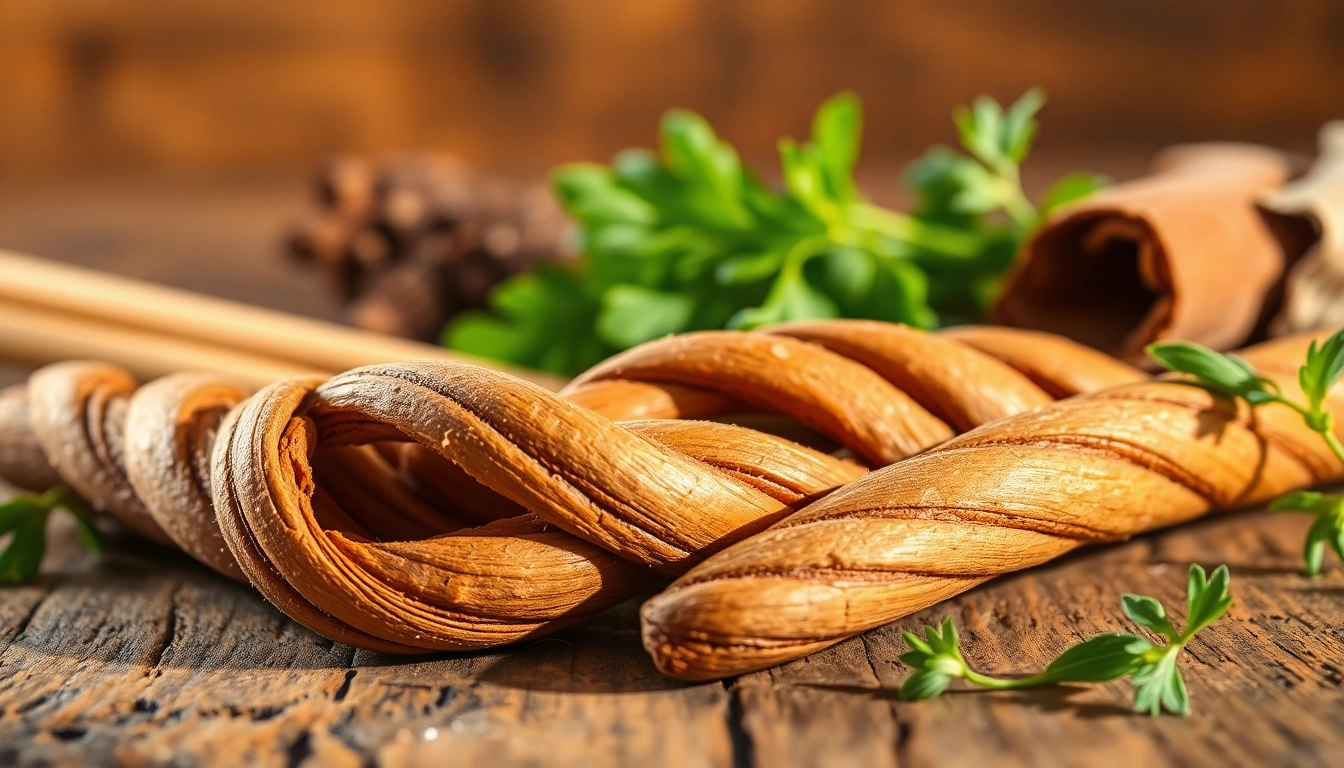1. What is Cinnamon Bark?
1.1 Definition and Origin of Cinnamon Bark
Cinnamon bark, derived from the inner layer of the tree bark from the genus Cinnamomum, is a spice renowned for its warm flavor and fragrance. The most commonly consumed varieties include Ceylon cinnamon (Cinnamomum verum, also known as “true cinnamon”) and cassia cinnamon (Cinnamomum cassia), which is often what people refer to simply as “cinnamon.” This aromatic spice has been utilized for thousands of years across various cultures for culinary, medicinal, and even ritualistic purposes. Cinnamon is primarily cultivated in regions with warm climates, including Southeast Asia, India, and parts of Africa.
1.2 Types of Cinnamon Bark: Ceylon vs. Cassia
The two principal types of cinnamon, Ceylon and cassia, differ markedly in flavor, aroma, and chemical composition. Ceylon cinnamon is often considered superior due to its sweeter, more delicate flavor and its lower coumarin content—a compound that can be harmful in large amounts. In contrast, cassia has a stronger, more pungent flavor and is largely what dominates the cinnamon market globally, often found in grocery stores labeled simply as “cinnamon.” Understanding these differences is crucial for culinary applications as well as health considerations.
1.3 Cultural Significance and Historical Uses
Cinnamon has played a significant role in various ancient cultures. Historical texts reveal that Egyptians used it in embalming, and it was even considered more valuable than gold in the ancient world. In medieval Europe, cinnamon was highly sought after for its flavor and preservative qualities. Today, while it is widely available, its rich history adds to its appeal, bringing culinary and cultural context to its use in modern kitchens.
2. Nutritional Profile of Cinnamon Bark
2.1 Essential Nutrients Found in Cinnamon Bark
Cinnamon bark is packed with essential nutrients that contribute to its health benefits. It contains vitamins such as Vitamin K, Vitamin C, and several B vitamins, as well as minerals including calcium, iron, and magnesium. These nutrients contribute not only to the flavor profile of cinnamon but also to its therapeutic properties. Additionally, the bark is calorie-dense yet low in carbohydrates, making it an excellent addition to various diets, especially in moderation.
2.2 Comparing Nutritional Benefits of Different Varieties
Ceylon cinnamon boasts a higher level of antioxidants compared to cassia cinnamon, which is vital for combating oxidative stress in the body. It contains compounds like polyphenols that are linked to various health benefits, including reduced inflammation and improved heart health. On the other hand, while cassia is more accessible and affordable, its higher coumarin content makes it crucial for users to limit intake, particularly if consumed regularly.
2.3 Role of Antioxidants in Cinnamon Bark
The antioxidants found in cinnamon, particularly in Ceylon cinnamon, play a significant role in protecting the body from free radicals, which can lead to chronic diseases. Studies have shown that cinnamon can help reduce oxidative stress levels and may even contribute to healthier aging. Regular incorporation of cinnamon bark in daily diets could play a preventive role in numerous health challenges, including diabetes and heart-related diseases.
3. Health Benefits of Cinnamon Bark
3.1 Digestive and Metabolic Advantages
Cinnamon bark is widely acknowledged for its digestive benefits. It aids in reducing bloating, gas, and other gastrointestinal discomforts. The spice is known to stimulate digestive enzymes, enhancing overall gut health. Furthermore, cinnamon can boost metabolism, enabling more efficient digestion and nutrient absorption, which can be particularly beneficial for individuals aiming for weight management or improvement in dietary habits.
3.2 Cinnamon Bark’s Anti-Inflammatory Properties
The anti-inflammatory properties of cinnamon bark are another important health benefit. Compounds like cinnamaldehyde have been shown to significantly reduce inflammation in the body, which can alleviate pain conditions and contribute to overall health. Regular inclusion of cinnamon in the diet can potentially help manage inflammatory conditions such as arthritis and even some skin issues.
3.3 Impact on Blood Sugar Levels and Heart Health
Cinnamon bark has garnered attention for its potential to regulate blood sugar levels. Studies suggest that cinnamon can enhance insulin sensitivity and lower blood sugar levels for individuals with type 2 diabetes. Its cholesterol-lowering properties also contribute to heart health by improving lipid profiles, thereby reducing the risk of heart disease. Integrating cinnamon bark into meals can offer a delicious way to support cardiovascular wellness.
4. How to Use Cinnamon Bark in Daily Life
4.1 Culinary Uses: Recipes and Preparations
Cinnamon bark can be utilized in a variety of culinary applications, from savory to sweet. It is commonly used in a range of dishes, including stews, curries, and baked goods. For instance, adding a stick of cinnamon to a pot of chili or using ground cinnamon in oatmeal can enhance flavors significantly. Additionally, cinnamon bark can be brewed into teas or infused into warm beverages like apple cider, offering a delightful autumnal taste.
4.2 Using Cinnamon Bark for Natural Remedies
The medicinal properties of cinnamon have made it a staple in numerous natural remedies. It can be used to make teas that alleviate cold symptoms or to create a soothing paste for skin irritations. Cinnamon oil, derived from the bark, is often used in aromatherapy for its calming properties. From treating minor digestive issues to acting as a natural antimicrobial, the versatility of cinnamon bark in home remedies is impressive.
4.3 Creative Ways to Incorporate Cinnamon Bark into Wellness Routines
Individuals can enhance their wellness routines by using cinnamon bark in various innovative ways. For instance, creating a spa-like atmosphere with cinnamon-infused oils during baths can promote relaxation. Additionally, adding slices of cinnamon bark into a potpourri can provide a refreshing aroma in living spaces. Daily smoothies can also be boosted by including ground cinnamon, making health choices not only beneficial but flavorful.
5. Precautions and Side Effects of Cinnamon Bark
5.1 Potential Allergies and Tolerances
While cinnamon bark is generally safe for most individuals, it is essential to be aware of potential allergic reactions. Some people may experience skin irritation, gastrointestinal discomfort, or allergic rhinitis upon exposure to cinnamon. It is advisable to start with small amounts and monitor any reactions, especially for those with sensitivities to similar spices.
5.2 Recommended Consumption and Dosage
The recommended dosage of cinnamon bark can vary based on its form—whole sticks, ground powder, or extract. Generally, consuming 0.5 to 2 teaspoons of ground cinnamon per day is considered safe for most adults. For cinnamon extract, a dosage of 1-6 grams daily is typical. However, prolonged use of high doses, particularly of cassia cinnamon due to its higher coumarin content, might lead to health concerns.
5.3 Interactions with Medications and Health Risks
Cinnamon bark may interact with certain medications, particularly those for diabetes and blood thinners. It is crucial for individuals on such medications to consult with healthcare professionals before significantly increasing cinnamon intake. Monitoring blood sugar levels is also recommended for those who are on diabetes medications to prevent hypoglycemia.


